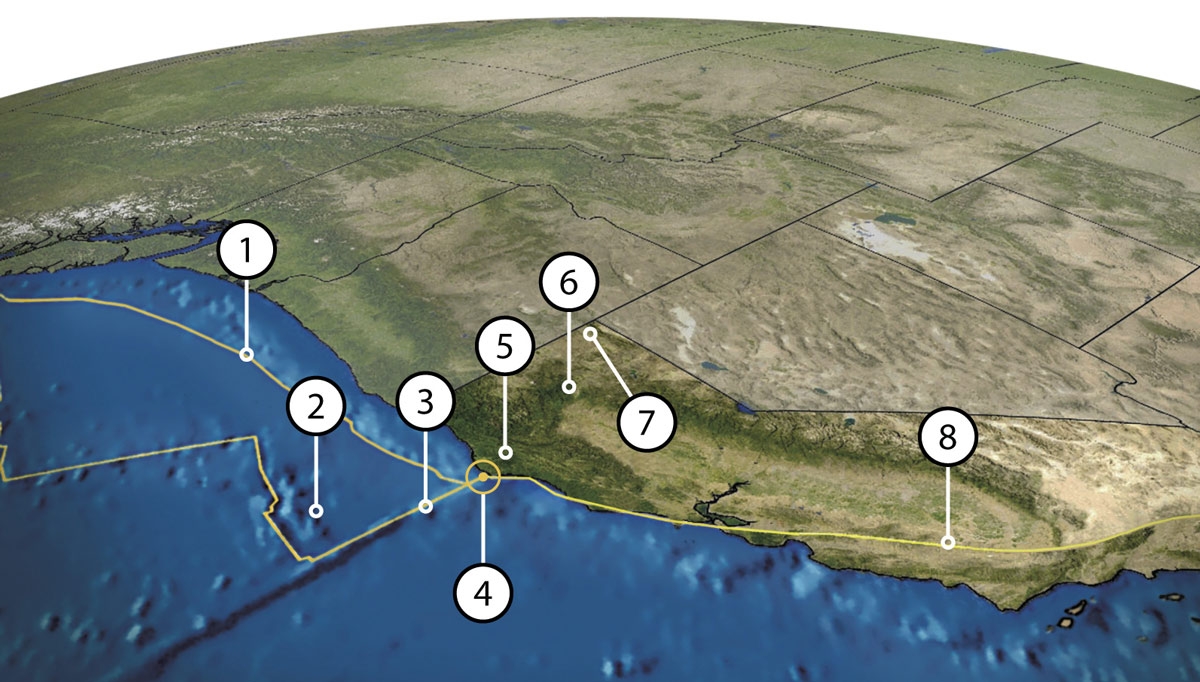You live in Earthquake Country
All areas of Northern California have experienced earthquakes in the past and will do do again in the future.
In the past 150 years, nearly 40 earthquakes of magnitude 6 or larger have affected Northern California. Most of these earthquakes were centered on faults nearby. But very large earthquakes located elsewhere in the Pacific basin, like the 1964 magnitude 9.2 Alaska earthquake can generate tsunamis that threaten our coast.
Earthquakes of magnitude (M) 6 and larger since 1900 located in California north of Santa Rosa and in the adjacent off-shore area.
Northern Califonia is one of the most beautiful places in the United States to live with its high mountains, rugged coast and dramatic vistas.
The geologic forces that have made it a spectacular place to live also make it one of the most earthquake-prone spots in the continental United States. Forces deep within the earth have folded and broken great slabs of the earth’s outer surface to create the Coast Ranges, the Trinity Alps, the Modoc Plateau and the High Cascade volcanoes.
How seriously you and your community are impacted and how quickly you recover from the next large Northern California earthquake is largely a matter of what you know and how well you prepare for the inevitable. This handbook will help you do precisely that.
California’s most damaging earthquakes of the past 150 years, such as the 1906 “San Francisco” earthquake, have occurred on faults in the San Andreas fault system. While we are at risk of future San Andreas tremors, there are many other seismic zones, some capable of producing earthquakes as large or larger as the one in 1906. North of the Mendocino triple junction lies the 700 mile long Cascadia subduction zone, believed capable of producing magnitude (M) 9 earthquakes. Faults in Northeastern California show evidence of past earthquakes in the (M) 7 range.
Plate Tectonics
If our planet were the size of an egg, the earth’s outermost layer would be about as thick as the eggshell. This shell is broken into several pieces called plates, which move about as fast as your fingernails grow. A plate boundary is where one plate meets another. A triple junction is an area where three plates or plate boundaries meet.
The vast majority of the world’s earthquakes occur at or near the boundaries between plates. The most seismically active plate boundaries are convergent zones where one plate dives beneath an adjacent plate in a process known as subduction. Northwestern California is located on top of one of these zones known as the Cascadia subduction zone.
Our Faults
Faults are weak zones in the earth’s crust where the rock on one side has moved relative to the other side. Some faults, like the San Andreas, are vertical and the two sides move horizontally like cars on a freeway. Thrust faults slope like a ramp and the rock above the fault is pushed up and over the rock below. The largest faults on earth are thrust faults in subduction zones. An earthquake is caused when the rock miles below the earth’s surface breaks along the fault and the two sides suddenly slip in a process called fault rupture. The larger the rupture area, the larger the earthquake. The rupture begins many miles beneath the earth’s surface. The epicenter is the location on the ground surface directly above the point where the rupture starts.

